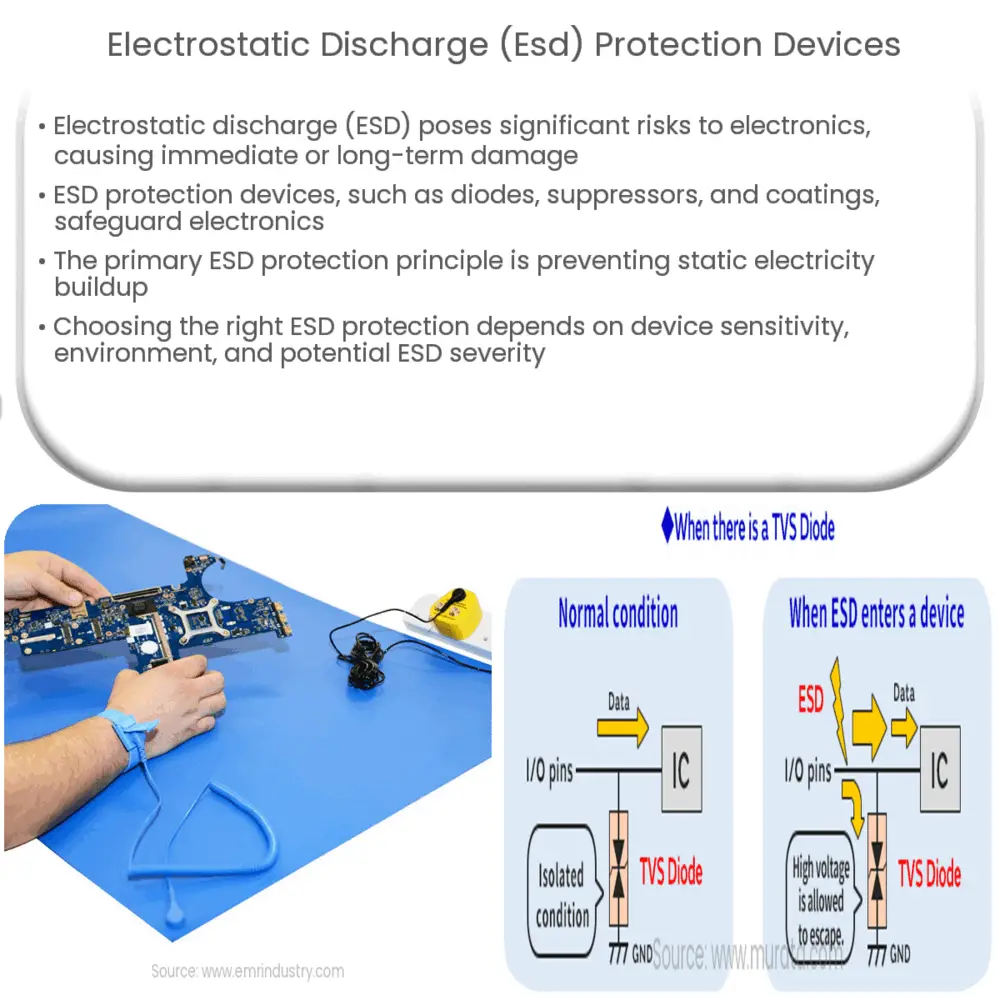Explore the importance of Electrostatic Discharge (ESD) Protection Devices, their types, selection criteria, and role in safeguarding electronics.

Introduction to Electrostatic Discharge (ESD) Protection Devices
Electrostatic discharge, often abbreviated as ESD, is a ubiquitous phenomenon that poses a significant risk to electronic equipment. ESD is characterized by a sudden flow of electricity between two electrically charged objects, typically induced by contact, electrical shorting, or a breakdown in a dielectric medium such as air.
The Need for ESD Protection
Most electronics can be easily damaged or destroyed by high-voltage ESD events, as these can cause instantaneous and irreversible damage. The damage may either cause the device to fail immediately, or it may degrade the device’s performance, leading to a reduced operational lifespan. Consequently, protecting sensitive electronics from ESD is a critical part of electronic device design.
Types of ESD Protection Devices
Principles of ESD Protection
The primary principle behind ESD protection is to prevent the buildup of static electricity that could result in a discharge. This can be achieved by employing a combination of ESD protection devices, grounding techniques, and careful electronic design.
Understanding how each type of ESD protection device works is vital in determining the most suitable protection for specific electronics. The choice of protection depends on factors such as the device’s sensitivity to ESD, the environment it will be used in, and the potential sources of ESD.
Factors to Consider When Selecting ESD Protection Devices
Selecting the right ESD protection solution involves careful consideration of several factors, including the nature of the electronic device, the environment in which it will operate, and the severity of ESD events it may be exposed to. Understanding these variables can lead to an effective protection plan that can extend the life of your electronics and maintain their operational efficiency.
Conclusion
In conclusion, Electrostatic Discharge (ESD) Protection Devices are indispensable in maintaining the integrity and performance of sensitive electronic equipment. They function by either diverting the electrostatic discharge away from the device, absorbing the ESD energy, or preventing the buildup of static electricity. The choice of protection measures should be guided by the device’s sensitivity, operating environment, and the anticipated severity of ESD events. By understanding these elements and using the correct ESD protection, the potential damage from electrostatic discharge can be significantly reduced, thereby safeguarding the longevity and efficiency of electronic devices.

